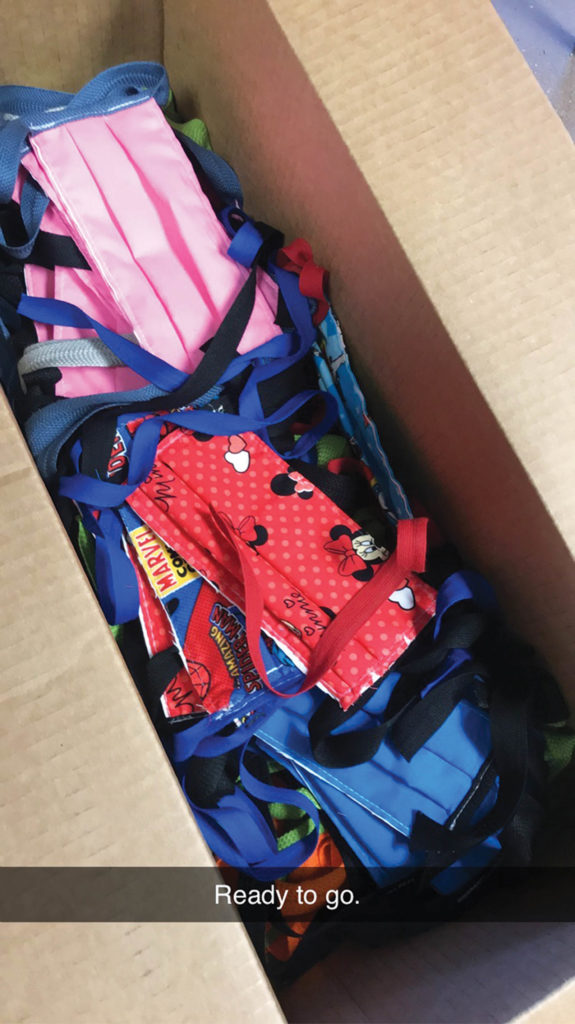Adding automation can prove challenging, with costs to consider, processes to change and nervous employees to reckon with. Still, fabricators who have taken the leap say there’s no other way to go.
by Pamela Mills-Senn
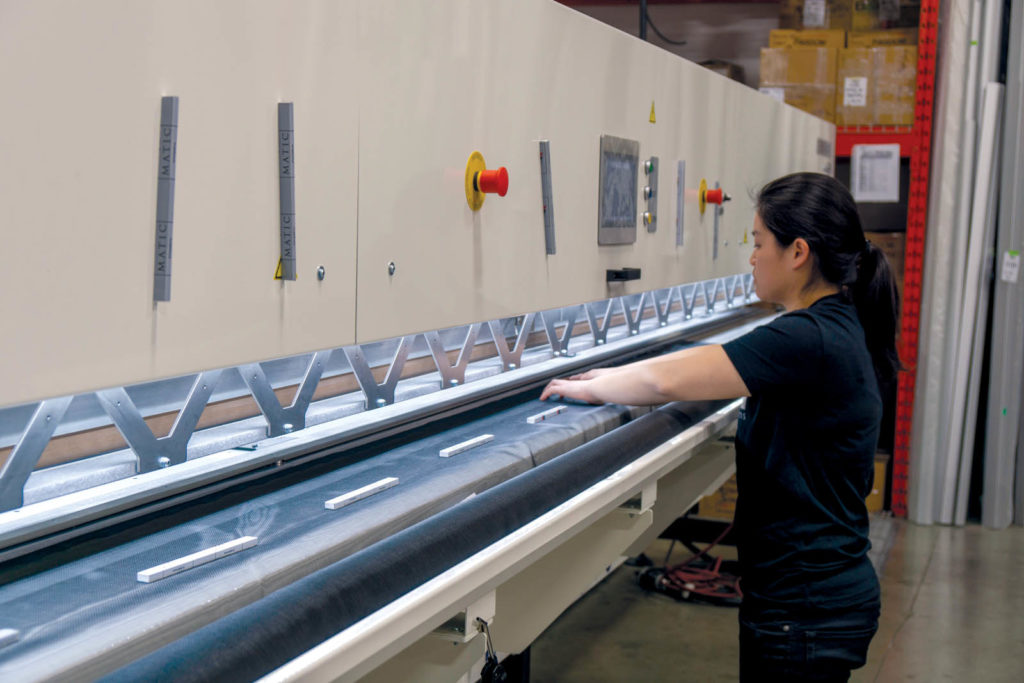
When Darren Arthur, owner of Nautilux Custom Canvas LLC in Hazlet, N.J., purchased a single-fly Aeronaut cutter eight years ago—his first foray into automation—most in the industry felt such technology was better-suited for large, high-volume shops, not small operations like his. At the time, Arthur, who provides custom textile products to the marine industry, had just one employee. Although he was looking to increase production, finding good workers was a struggle. A cutter, he reasoned, would allow him to take on more work despite this challenge.
Even though this acquisition was a big leap of faith, Arthur knew he could make it work. His optimism was bolstered by his engineering and CAD background. He quickly began seeing benefits.
“We realized a 32 percent overall reduction in material costs because of less waste and more accurate ordering,” he recalls. “I was able to order exactly what I needed rather than having to estimate. Our shipping costs were reduced as well.”
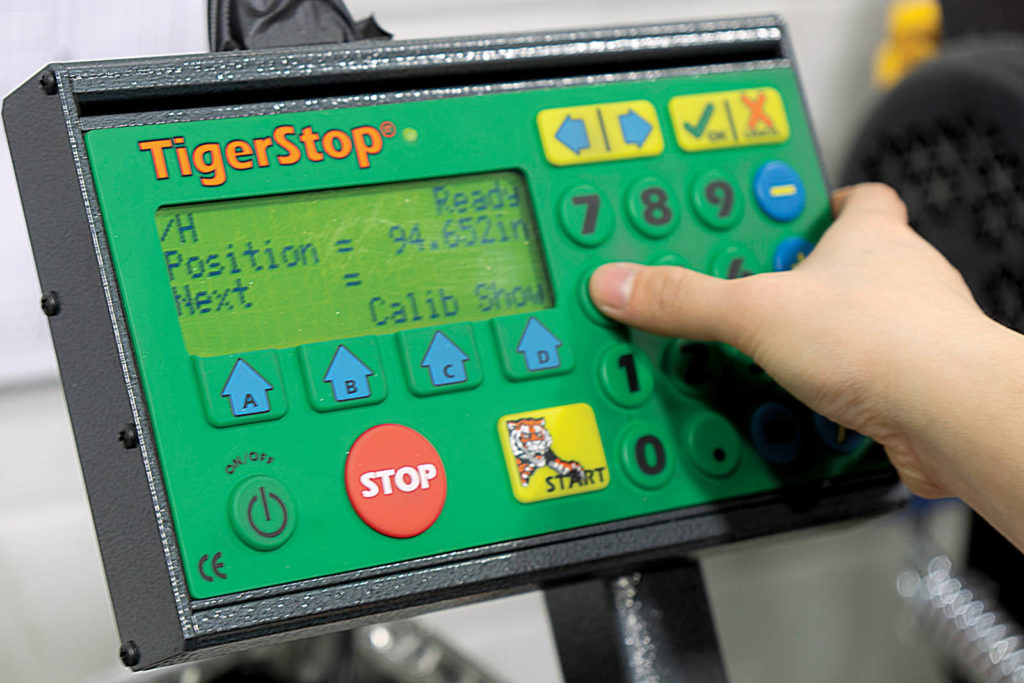
Inspired, he later added several digitizing devices to his toolbox and recently purchased an Artec Leo 3D scanner for outdoor use. Although Arthur could tell in one month that ordering the cutter had been a good idea, it took about two years before ROI was achieved. However, he anticipates the ROI for the 3D scanner will be realized in just months.
“Technology is going to happen; you need to embrace it or you’ll get left behind,” he says. “There will come a time when technology has advanced so far that the industry as we know it today will no longer exist. If you’re going to open a sail loft shop today, you won’t be able to compete without technology.”
Automation advantages
Arthur’s main objectives for incorporating automation into his operation were ramping up production while keeping quality consistent and predictable—goals he has achieved. Darcy Puri, general manager for Wizard Screen Solutions, says these were the goals of Wizard as well.
Located in Burnaby, B.C., Canada, the manufacturing company provides retractable screens to OEM, window and door companies and to the Wizard dealer network. The company began automating in 2017 using computerized TigerStop™ cutting guides, a customized testing station for quality assurance of its architectural and large-format products, and an impulse welder using a Matic bar welder.
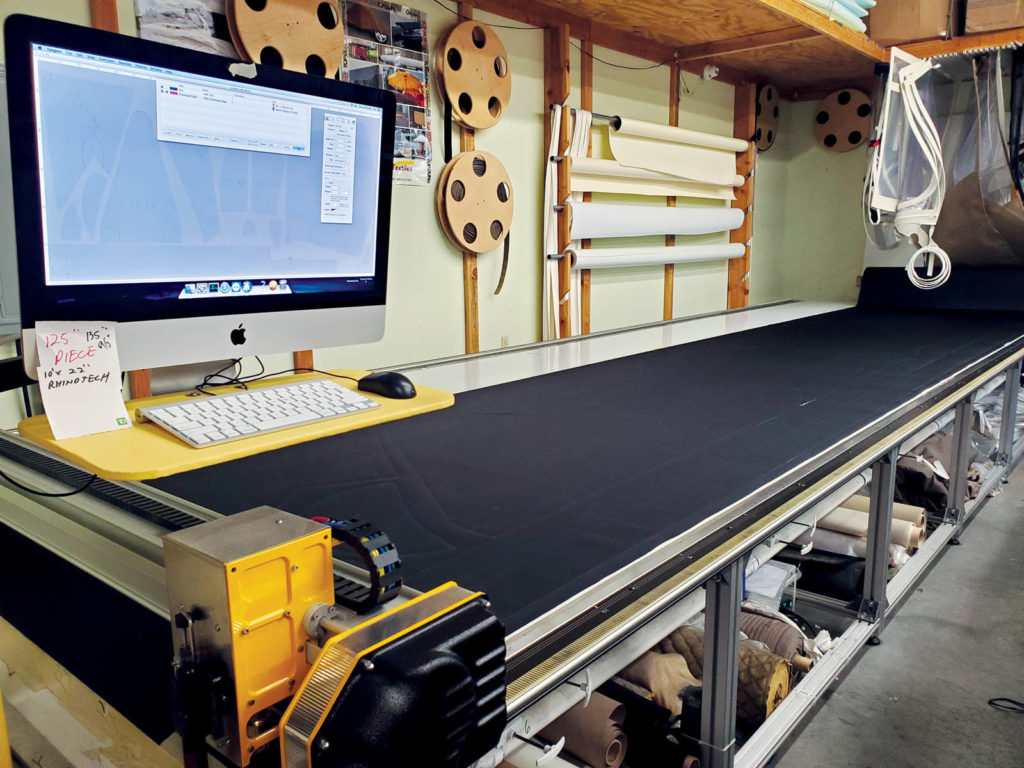
“It was important to ensure best-in-class products,” says Puri. “To do this, consistency in our components was key. Automation has helped achieve these goals while building capacity and cost savings in the production process.”
Technology has sparked innovation, enabling the company to align its products to market trends as well as improving service levels. Automation has also kept the doors open despite the COVID-19 crisis, which has resulted in staff reductions. Normally, the company has 30 full-time and two part-time employees. As of this writing it’s down to 10, comprised of management.
“The only reason we can do this is because of automation,” Puri says. “People were cross-trained to operate the software, and this is keeping our plant going.”
Faith Roberts is president of Banner Canvas, a custom marine interior and exterior canvas manufacturer located in Ham Lake, Minn. The company also has an industrial division that fabricates products from blueprints for the coal mining, food handling and aerospace industries.
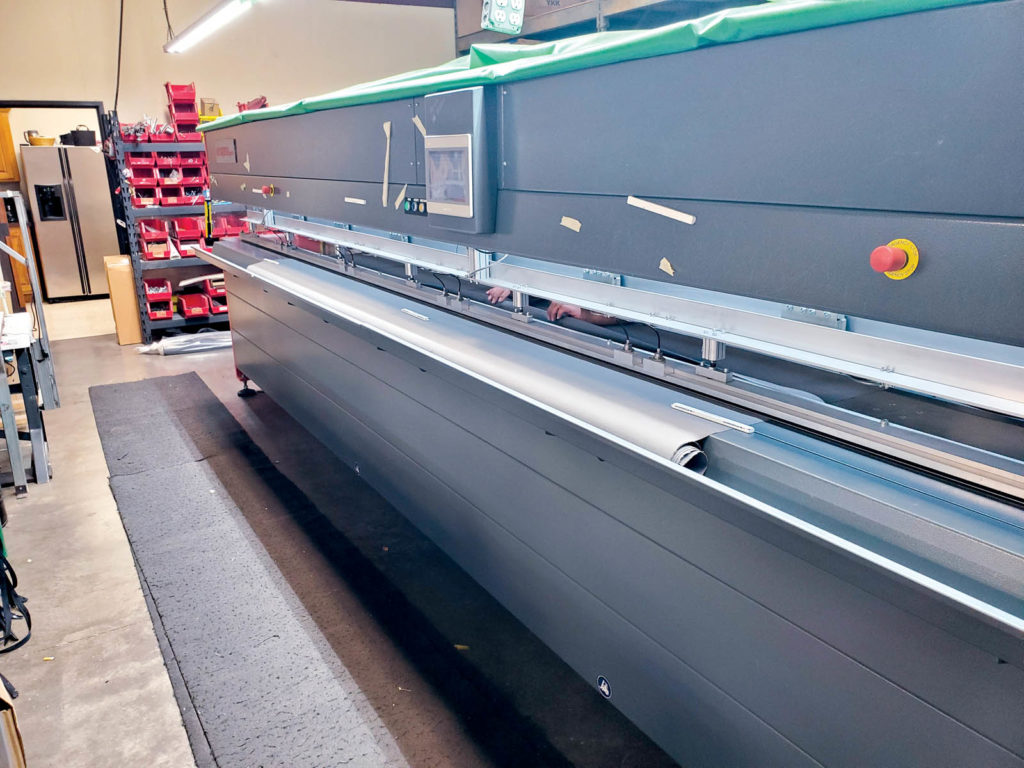
In late 2018, Roberts bought a Carlson CTx 72-inch air bed cutting table, purchasing a digitizer at the same time. Her primary purpose was to streamline manufacturing within her industrial division.
“The blueprint files come from a CAD or other computer process that I prequalify with my customers so their files can be downloaded into the cutter bed’s software,” she explains. “The digitizer allows me to input an existing pattern to cut and store for future use.”
Additionally, given the challenge of finding qualified employees, Roberts also wanted to cut manufacturing time and stay profitable.
Flexibility and efficiency
Using a competitor’s plotter/cutter is a strategy Roy Childres, president of Double C Canvas and Repairs Inc., has deployed when needed. This won’t be the case much longer. Childress, whose Midlothian, Texas, company manufactures truck covers and exterior curtains for commercial and residential applications, just purchased his own Autometrix plotter/cutter, anticipating delivery soon.
This isn’t his first automation go-round. In 2010 he bought two RF machines (he’s now down to one); in 2014 he purchased a Murro grommet machine; and last April, he bought a Sigma impulse welder. Four years ago, he began thinking about the plotter/cutter to help keep up with production increases.
The impulse welder enabled one person to do the work of four and replaced one RF machine. When Childres saw the efficiencies gained by that machine, he became excited about what could be achieved with a plotter/cutter. For example, currently, it takes two people 30 hours to cut 16 full-size curtains. With the plotter/cutter, one person could manage this same volume in two hours.
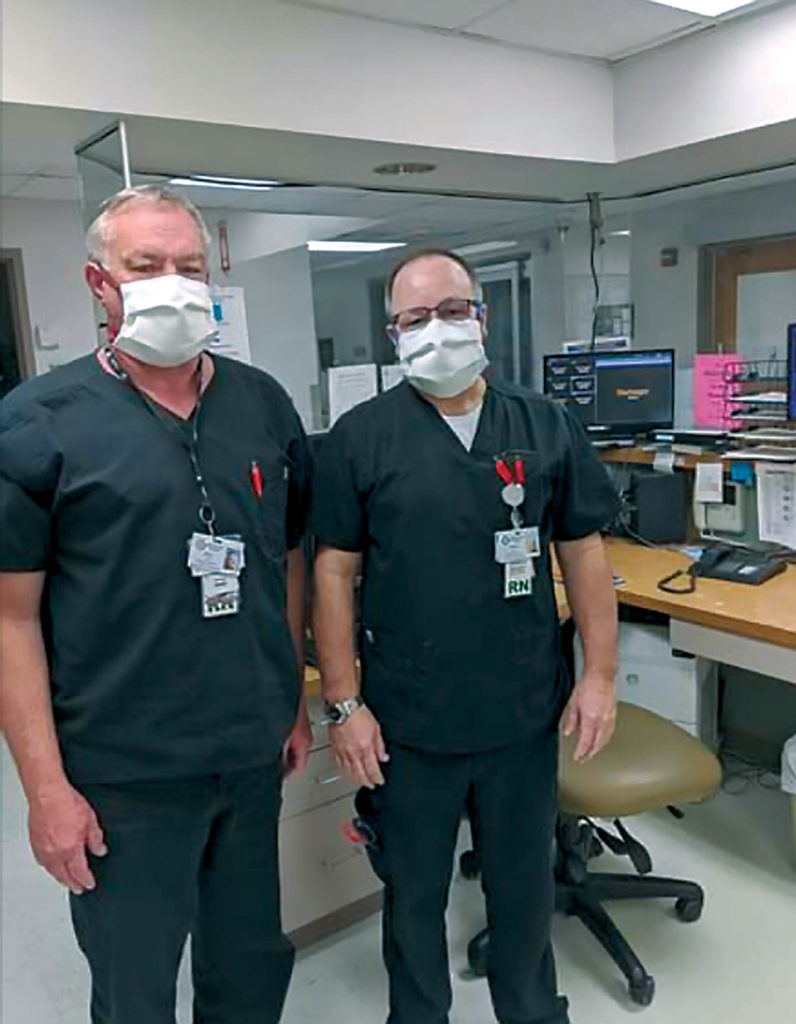
Childres says the ROI for the welder was achieved in about six months. He anticipates ROI for the plotter/cutter will be realized in under a year.
Employees initially worried about potential job loss related to the welder, says Childres. But when the nine-person staff wasn’t downsized—instead, employees were moved to other areas of the operation—they relaxed. Technology hasn’t forced him to let people go; it has kept him from having to hire up. Childres also told staff their pay would rise along with their skill sets because of cross-training. Consequently, the plotter/cutter’s impending addition hasn’t aroused any concerns.
Concerns and hesitations
Automation is expensive, which can cause some companies to hesitate and even prevent others from moving forward. Still, there are financing and leasing options available that can put this technology within reach. But perhaps more concerning to owners is the human factor. Although Childres says his employees have become accepting of technology and Arthur says the same, this isn’t always the case. Companies often face employee resistance. This was a concern of Carl Ryan Cordell, owner of American Canvas Products, when he purchased an Autometrix cutting machine in 2018. Located in Fort Worth, Texas, the custom canvas shop specializes in making truck tarps, awnings, and pool and boat covers.
“All our employees—there are 10 full-time workers—are set in their ways and don’t like to deviate from what’s comfortable,” Cordell says. “I was also skeptical if the machine would be able to do the cuts necessary for some of our small projects.
“But this machine has been a blessing,” he continues. “Most of our cutting is being done by it, although it’s taken us a year to get away from scissor cutting. Currently, this table has allowed us to make thousands of PPE [personal protective equipment] masks to help with the COVID-19 outbreak. Without it, we wouldn’t have been able to have the same impact.” American Canvas has orders for more than 7,000 masks, making them for hospitals, nursing homes, and police and fire departments.
The company’s learning curve was slow; it went through a lot of cheap material getting things dialed in. During this time, employee complaints over how they could have done it faster by hand flew at Cordell and his production manager. It’s not like that now.
“Employees love the jobs the table cuts for them,” he says. “One job we do that usually takes a week to manually cut only takes 33 minutes using the table. We can do anything because our cut-time is so low. We just finished cutting over 5,000 surgical masks while also doing the other jobs we have going.”
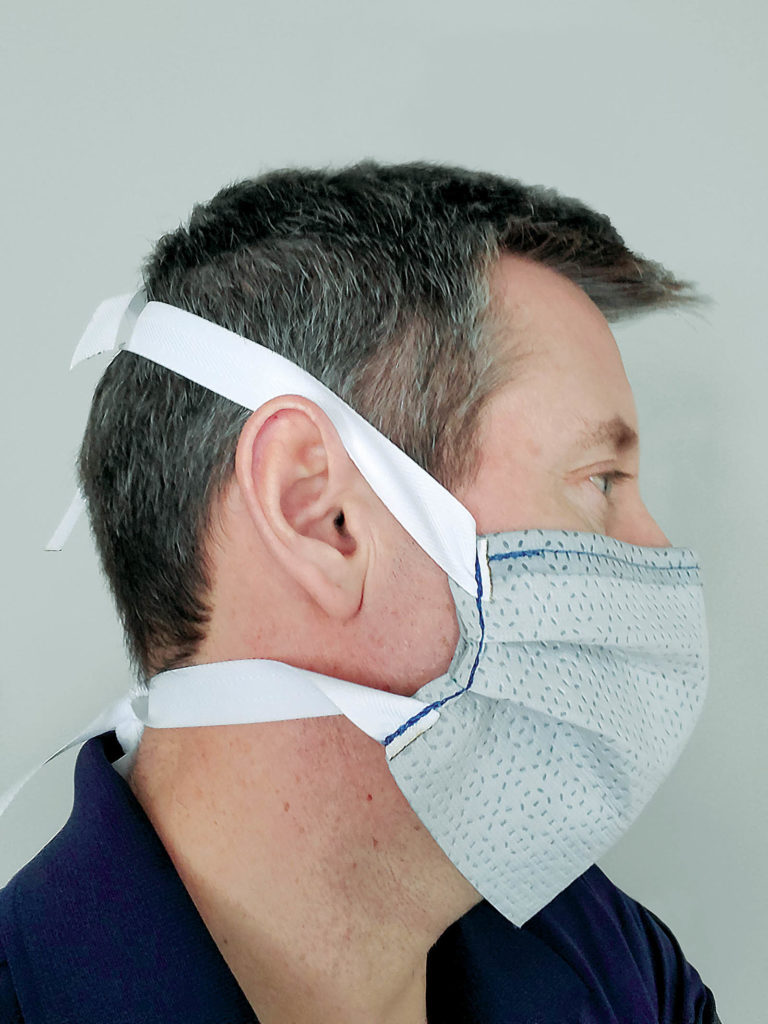
Jeff Newkirk’s biggest concern about the Autometrix plotter/cutter he recently purchased was the CAD knowledge required. Newkirk is owner of Precision Custom Canvas Inc., in St. Catharines, Ont., Canada, a full-service sewing operation manufacturing custom canvas products and upholstery primarily for the recreational marine industry. He says the table, acquired when a local sailmaker closed, is his first move into automation. Although he plans to hire a full-time employee to do much of the CAD work, he wants to gain the base knowledge necessary to implement the early development of the shop’s digital systems before turning this over to someone else.
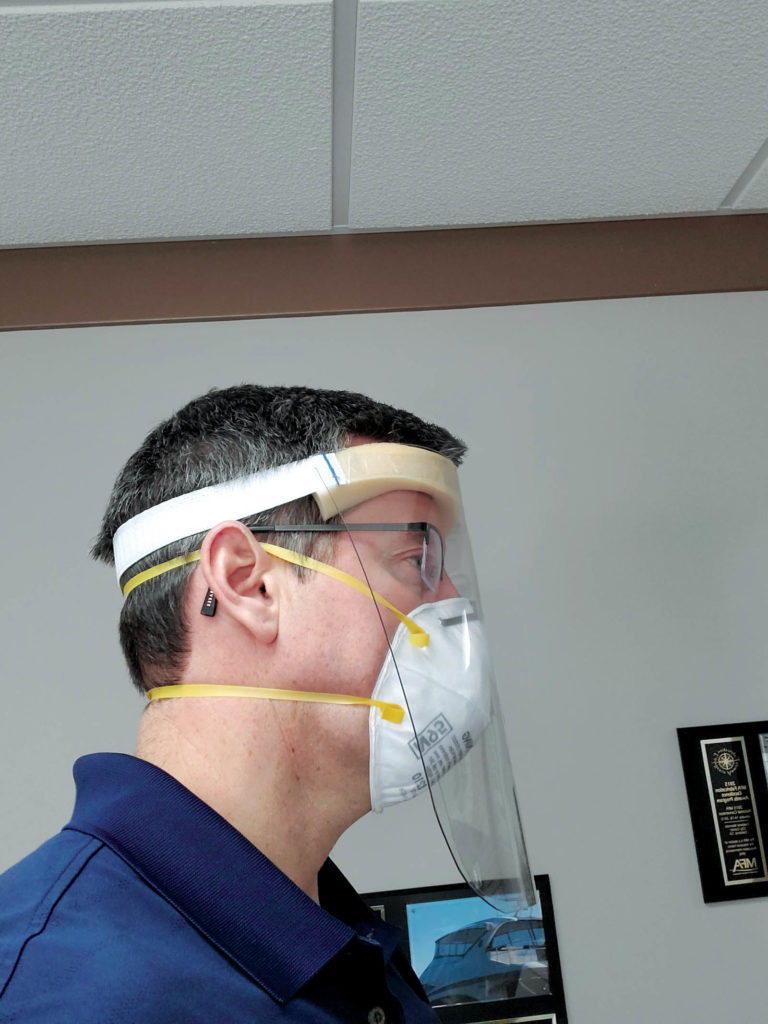
His is a small shop—there’s him, a full-time sewer and a part-time general worker—so finding time to reconfigure his production area and develop the new equipment and processes has proved challenging. He had hoped to be fully digital by this season but has pushed implementation back, operating manually through the spring rush. For now, he’s fulfilling PPE orders, hiring up and using an outside cutter to help produce masks, face shields and barrier curtains for health care workers and providers. He anticipates integrating the digital component into his operations later this summer.
“There are many opportunities that become available when you increase your output with digital technology,” Newkirk says. “My employees are excited. They see the benefits of a streamlined process and the growth potential once we’re fully integrated.”
Pamela Mills-Senn is a writer based in Long Beach, Calif.
SIDEBAR: Planning for Success
When Wizard Screen Solutions began exploring the idea of automating aspects of its production, it started by identifying the bottlenecks impeding manufacturing, says Darcy Puri, general manager of the Burnaby, B.C., Canada-based company. Wizard employees also:
- talked to customers and spent time project planning the key performance indicators for success.
- solicited consultant help, spoke with suppliers and met with like businesses to learn from their processes/procedures.
- visited various operations to test the equipment and technology already in place.
- for some areas, spent as much as two years researching various equipment specifications.
“We also did lots of reading and had endless hours of dialogue by email and phone with companies that provide automation and technology, working with company representatives to provide us with recommendations,” Puri recalls.
“Preference was given to companies that could show the tangible benefits of using their systems and that had an understanding of our business, from current to future needs,” he continues. “The best question we asked all providers we considered was, ‘How does your system or equipment make a better product for our customers?’ It was amazing how many providers couldn’t answer the question outside the scope of their equipment.”
 TEXTILES.ORG
TEXTILES.ORG



